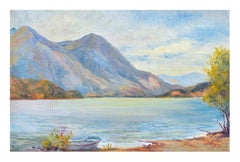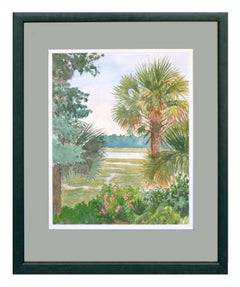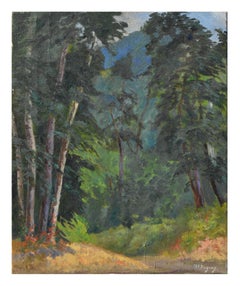Margaret E. Rogers Art
Margaret E. Rogers was one of the original "Jolly Daubers" with Cornelia DeGavere, Leonora Penniman and Louise Cunningham, Santa Cruz Art League Founding Members. She studied with Frank Heath on many wagon trips to Big Basin and Yosemite. Born in Birmingham, England, on May 1, 1872, the Rogers family immigrated to California in 1875 and established a prosperous sheep ranch in Monterey County. In her youth, Rogers was known as one of the finest horsewomen in the West. The magazine Western Woman said of her, “She could break the worst kind of bucking bronco without assistance; with the utmost ease she drove six or eight horses hitched together in a manner that would win admiration from the most experienced stage drivers of the old days." Rogers left her father's ranch in 1905 and moved to nearby Santa Cruz, where she settled in the Seabright area. For many years, she lived in the back of the old Tyrell house (now the site of the Natural History Museum on East Cliff Drive). It housed the Santa Cruz Art League, of which she was a cofounder in 1919. Rogers’ art studies were under local artists Frank L. Heath and Lorenzo P. Latimer. She and her constant painting companions, Cornelia DeGavere and Leonora Penniman, were known as the "Santa Cruz Three" and made many camping trips into the Sierra and surrounding area. A spinster, Rogers died in Santa Cruz, California, on March 15, 1961.
1940s American Impressionist Margaret E. Rogers Art
Oil, Cardboard, Canvas
1920s American Impressionist Margaret E. Rogers Art
Oil, Canvas, Cardboard
1930s American Impressionist Margaret E. Rogers Art
Watercolor, Laid Paper
Mid-20th Century American Impressionist Margaret E. Rogers Art
Oil, Board, Canvas
Early 2000s American Impressionist Margaret E. Rogers Art
Gouache
1910s American Impressionist Margaret E. Rogers Art
Paper, Watercolor
Mid-20th Century American Impressionist Margaret E. Rogers Art
Watercolor
21st Century and Contemporary American Impressionist Margaret E. Rogers Art
Watercolor, Archival Paper
Early 20th Century American Impressionist Margaret E. Rogers Art
Paper, Watercolor
2010s American Impressionist Margaret E. Rogers Art
Linen, Oil, Board
1950s American Impressionist Margaret E. Rogers Art
Cardboard, Oil
1910s American Impressionist Margaret E. Rogers Art
Canvas, Oil, Board
Early 20th Century American Impressionist Margaret E. Rogers Art
Paper, Watercolor
2010s American Impressionist Margaret E. Rogers Art
Canvas, Oil, Board
1920s American Impressionist Margaret E. Rogers Art
Paper, Watercolor
1940s American Impressionist Margaret E. Rogers Art
Canvas, Oil





